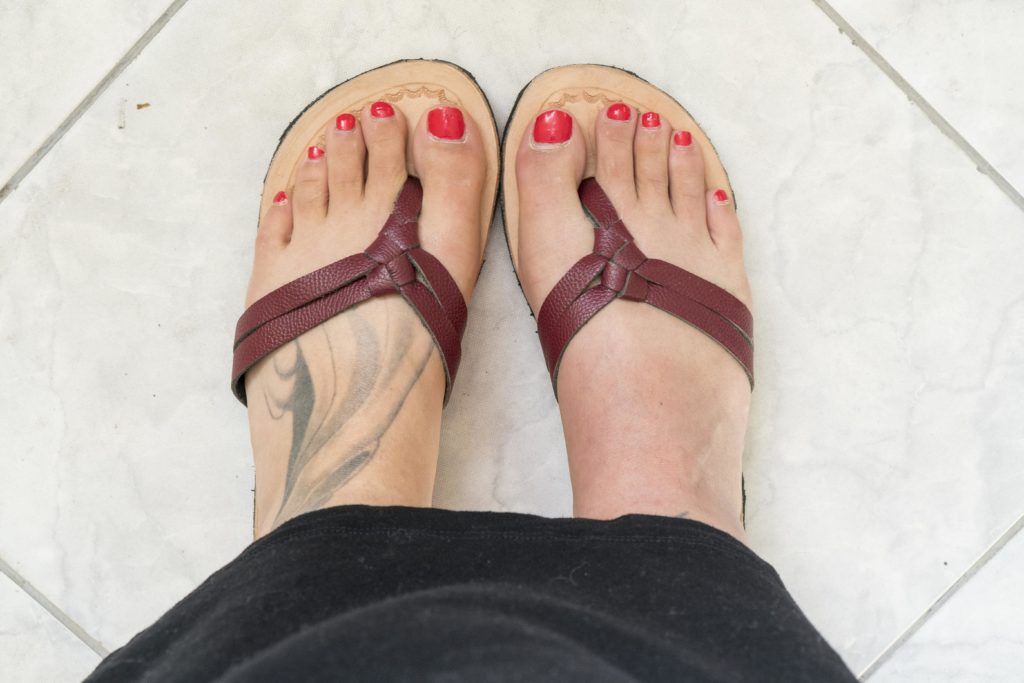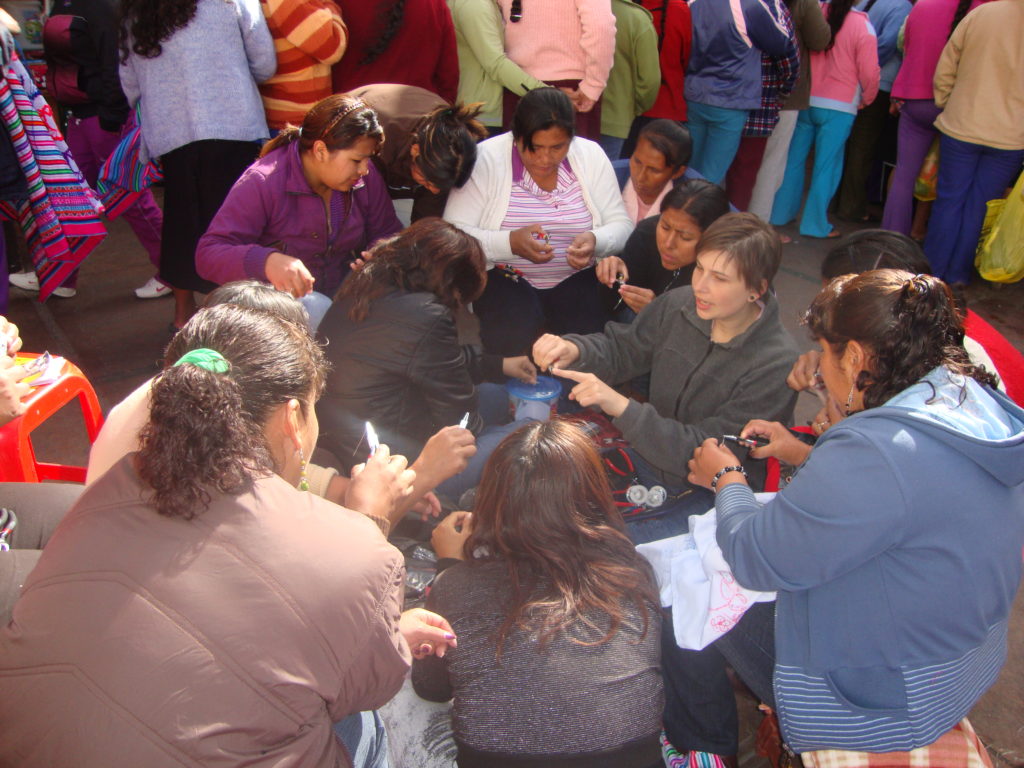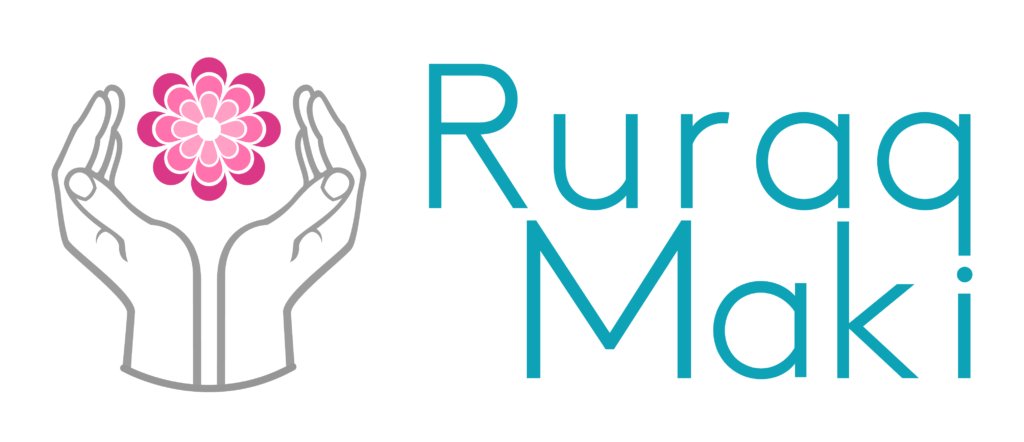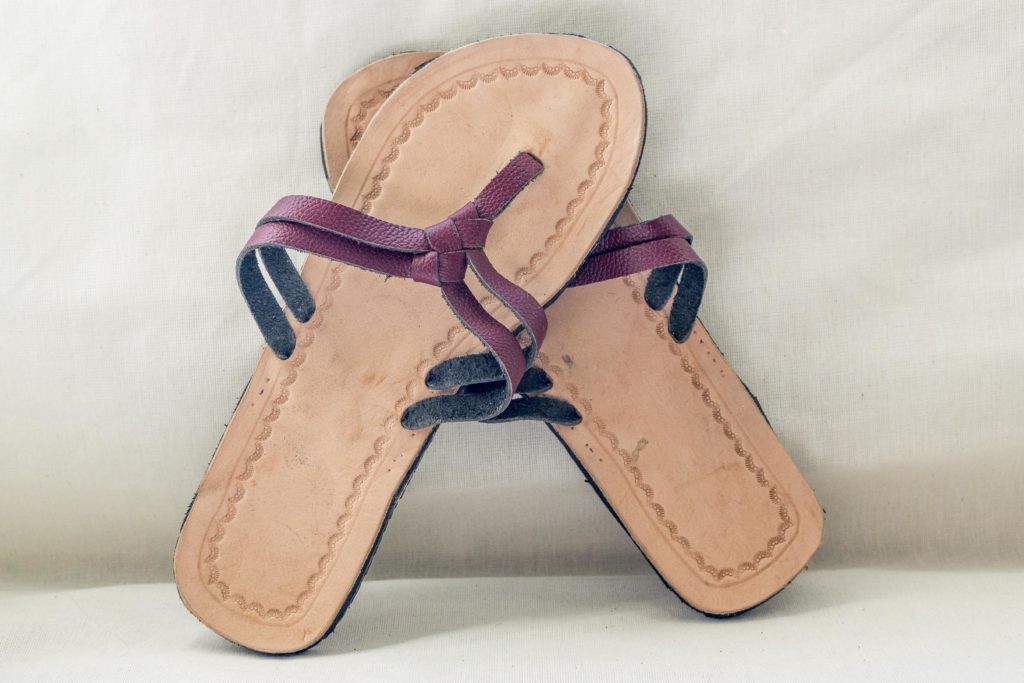Today ALL the women finished their sandals– which is a big win considering it’s often difficult to get the women to follow one timeline. But, by the end of class today, everyone had sandals and there was even a pair for me! The women surprised me with a pair of sandals that they had secretly made for me (I’m wearing them right now).
While the women worked on their sandals, I sat a spoke with Jessica, who is the director of an NGO that works in the prison. Her organization helps the women produce products for the local market and has a workshop within the prison that we use for our classes.

Jessica asked if, in the future, we could hold our jewelry making classes in their workshop so the women in her program can learn jewelry making too. Since our goal is to reach more women in the prison, I was in full agreement with this idea.
When we first started classes in prison everything had to be done in the women’s main cell block. These were in the days when getting permission to enter the prison was complicated and unreliable. There wasn’t a second place to work or even a table. Some of our early classes were held on the ground, sitting in a circle!

Now, things have changed dramatically. The cuna, once reserved for children, now has three separate workshops- a sewing workshop, a cosmetology workshop, and an artisan workshop. This is where we hold the leather working and quality control classes.
Most of the women who go to the cuna overlap in multiple programs. These women are focused on learning new skills and working in artisan, Almost all of the women in our programs participate in other programs in this area. To have a jewelry class within this workshop area would enable us to serve more women AND give our current program participants a more focused learning environment.
After the prison, on the bus ride home, Alberto spoke with me about some ideas he has for future leather working classes. He noted that the women are highly skilled artisans but they need to produce products that are sellable in the local market. Alberto is very familiar with the Peruvian artisan market as he attends trade shows all over Peru and South America.
He suggested that we pick one product that will be popular in the local market and that he teach a class on how to produce it efficiently. He even offered to help connect the women to the market and buyers. Alberto is connected with many international buyers. He receives multiple international invitations a year to sell his goods at expositions because his work is so well known.
This guy knows his stuff when it comes to the artisan market!
He told me, “Some of these women are so young. They are 20 or 22 years old and they remind me of my daughter. It gives me pain to see them here, so young, and I want to help them earn more money more consistently.”
I love the idea of a class that teaches the women HOW to produce large quantities of one product. Especially if we have a connection to the local market, the women could generate sustainable work within this market.
Having someone like Alberto, who knows what sells best for artisans, also increases our chances of success. Instead of having to go through a lengthy process of trial and error, Alberto can tell us exactly what buyers are buying.
Today was a big day for future collaborations which will make our programs more impactful and help the women earn even more money!

